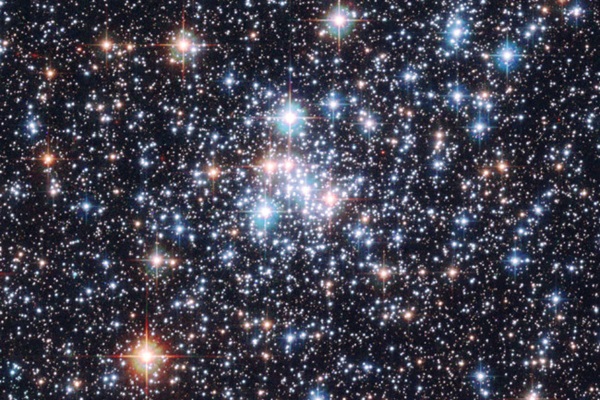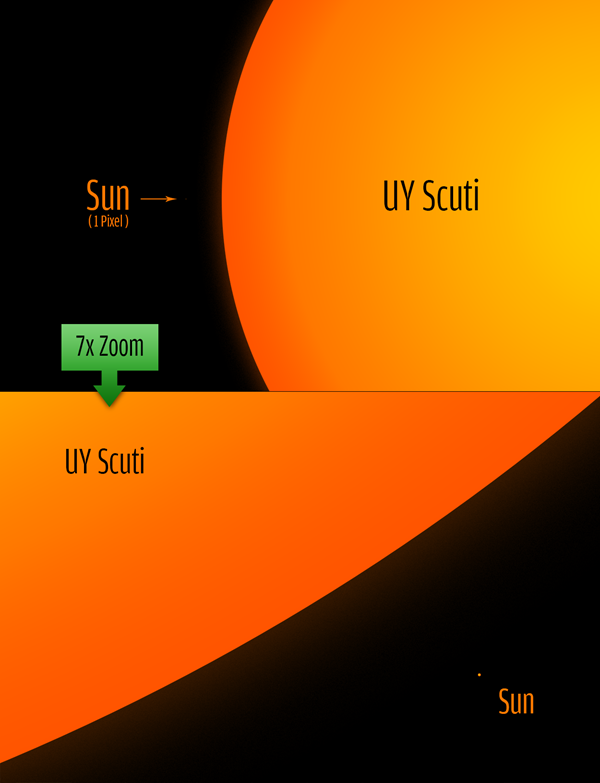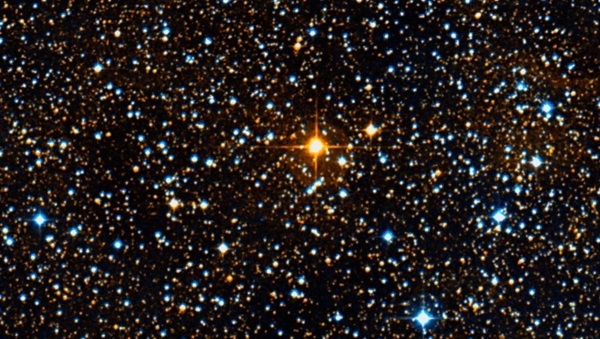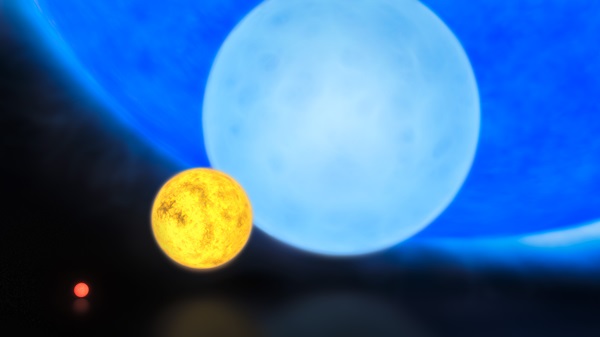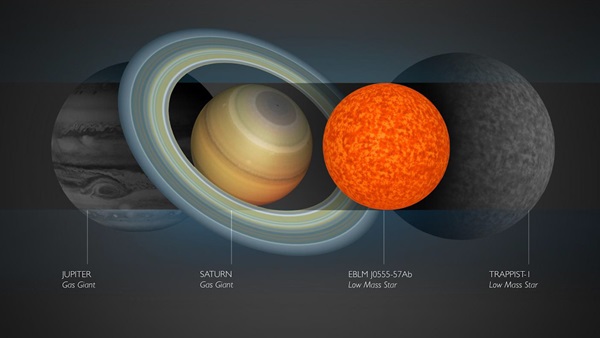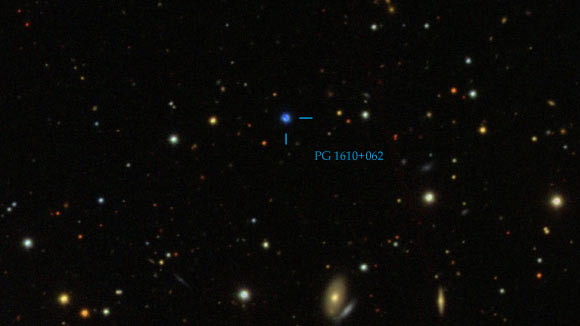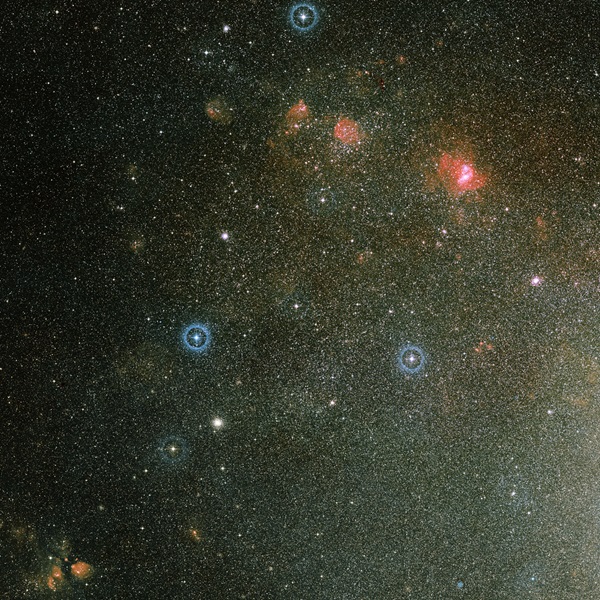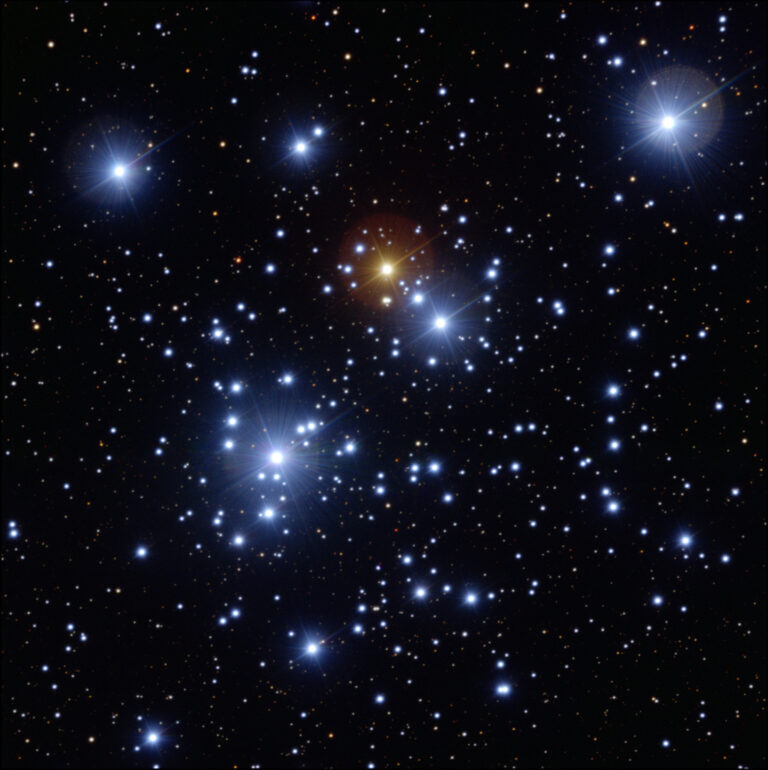Key Takeaways:
- The article presents five exceptional stellar types: red hypergiants (e.g., UY Scuti), exemplified by their immense size; the most massive known star, RMC 136a1, notable for its extreme mass and high temperature; exceptionally small stars like EBLM J0555-57Ab, pushing the lower mass limit for stellar fusion; hypervelocity stars (e.g., PG 1610+062), characterized by their high ejection velocities from galaxies; and theoretically predicted Thorne-Zytkow objects (TZOs), whose existence remains unconfirmed despite a candidate (HV 2112).
- The characteristics of these extreme stars are detailed, including their size (UY Scuti's radius being 1700 times that of the Sun), mass (RMC 136a1 at ~315 solar masses), and velocity (hypervelocity stars exceeding escape velocity from the Milky Way).
- The article discusses the formation mechanisms proposed for these stellar types, such as supernova explosions for hypervelocity stars and neutron star engulfment for TZOs. The difficulties in detecting and confirming the existence of some of these types, particularly small and faint stars and TZOs, are also highlighted.
- The article concludes by noting the unusual characteristics of our Sun, such as its relatively high mass compared to the majority of stars and the unique structure of its planetary system, contrasting it with the extreme stellar types previously discussed.
But the “average star” belies the true breadth and sheer weirdness of the universe’s stellar catalogue. Stars in the universe range from extraordinary hypergiants to stars so small they look more like gas giant planets than burning balls of hydrogen. Some stars move so fast they may leave their galaxies entirely, while theoretical stars may exist that stretch the boundaries of known physics.
From this panoply of stellar extremism we’ve chosen five examples that give you a taste of just how distinct and unique many classes of stars can be.
The Big Ones
The red hypergiant star UY Scuti is the largest star known. It has a radius about 1,700 times larger than the Sun. For comparison, the Sun has a radius about 110 times that of Earth.
Other than that, not much is known about UY Scuti. Even its distance from Earth is in dispute. Regardless, the giant star remains one of the most distant to have had its apparent (or angular) size as seen from Earth directly measured.
The Heavy Ones
RMC 136a1, the most massive star yet known.
At roughly 315 solar masses, RMC 136a1 is the most massive star known. But despite its hulking mass, the star stretches just 30 times the radius of our Sun. It’s part of a cluster of very hot, bright stars at the center of R136, the central concentration of stars in NGC 2070, a star cluster in the Large Magellanic Cloud’s Tarantula Nebula.
The Tiny Ones
Just larger than the planet Saturn; EBLM J0555-57Ab (57 Ab, for short) has just enough mass to enable the fusion of hydrogen nuclei into helium, according to the University of Cambridge. Located about 600 light-years away and part of a binary star system, 57 Ab was identified as it passed in front of its much larger companion.
The Fast Ones
Hypervelocity stars are stars that are speeding through our galaxy at such a high rate of speed that most will eventually break free from the Milky Way. Until recently, scientists thought the only way stars could reach such speeds was through the interaction of a binary star system with the supermassive black hole at the center of our galaxy.
The authors think PG 1610+062 was accelerated to such phenomenal speeds after a companion star exploded in a core-collapse supernova. Alternatively, the binary pair could have gained its velocity from gravitational interactions with young and dense stellar clusters. In such scenarios where two stars are locked in orbit around each other, their interaction with other stars in dense clusters can catapult the less massive star in the binary system into a hypervelocity trajectory.
The Theoretical Ones
Thorne-Zytkow objects (TZOs), which exist only in theory thus far, are thought to form when a compact neutron star is surrounded by a large, diffuse envelope of hydrogen gas , say the authors of a 2014 paper in the Monthly Notices of the Royal Astronomical Society. Supergiant TZOs are predicted to be almost identical in appearance to red supergiants (RSGs), thy say. And they have unusually strong heavy-element and Lithium lines present in their spectra.
First hypothesized to exist by theoretical physicists Kip Thorne and Anna Zytkow in the late 1970s, van Belle says TZOs are thought to come from a scenario wherein a star going supernova “kicks” its leftover core — now a neutron star — into another star.
Van Belle cautions that this is an extremely unlikely, but not impossible, occurrence. Thus, TZOs, if they exist at all, are quite rare. Astronomers do have one candidate TZO, called HV2112, located in the Small Magellanic Cloud some 200,000 light-years away in the southern constellation of Tucana.
“Given that TZO models are not recent, it is difficult to confirm if HV2112 is a TZO or merely a more ‘regular’ evolved star,” said van Belle.
The Familiar One
Finally, our Sun itself qualifies as a bit strange, even though it’s long been billed as an ordinary yellow dwarf star.
Why is the Sun odd?
It’s oddly massive, van Belle says. Even though it’s in the middle of the range of possible sizes for stars (from roughly an eighth of a solar mass to some 100 solar masses), van Belle says that more than three quarters of all stars are less massive than our Sun.
And although half of all solar-type stars are thought to have a companion, our Sun apparently never did. In comparison to other stars in its spectral range, the Sun is photometrically pretty stable. That means the Sun’s brightness doesn’t vary by much — perhaps one factor key to the evolution of life on Earth.
And finally, van Belle emphasizes that no planetary system with a structure similar to ours has been found orbiting a Sun-like star.
As for the extreme stars above?
They are theoretically interesting but very unlikely to currently support life as we know it.

